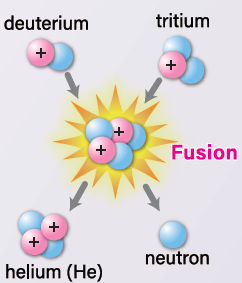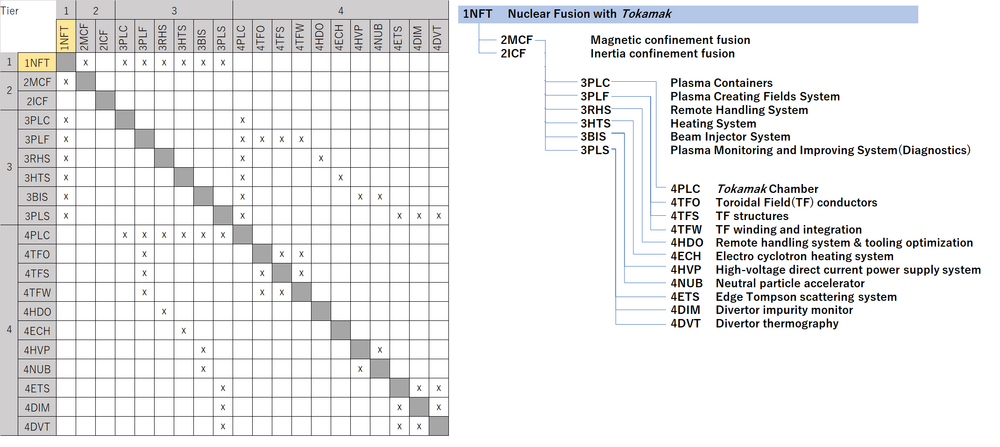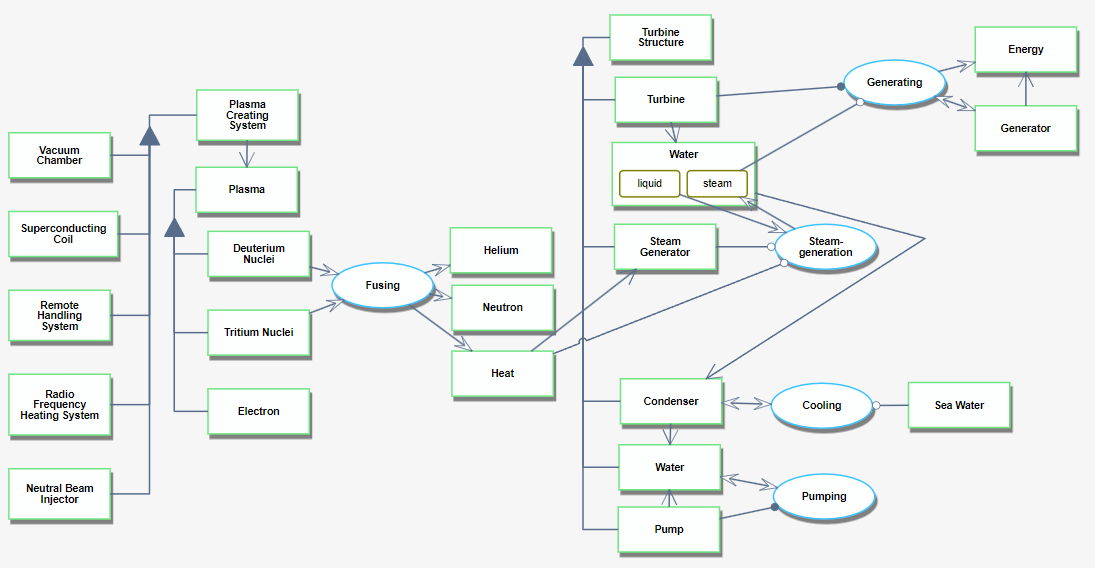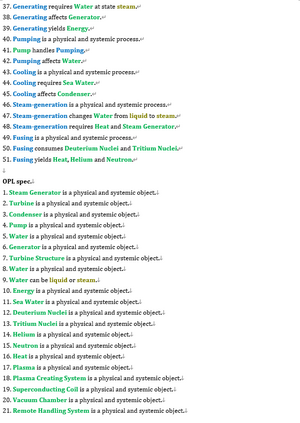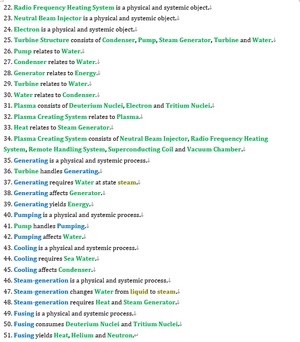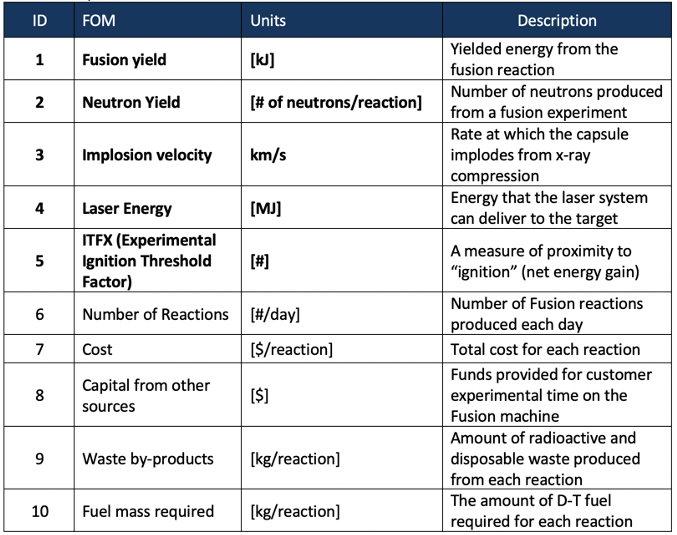Difference between revisions of "Nuclear Fusion"
| Line 17: | Line 17: | ||
Fusion reactions occur when two or more nuclei come close enough to each other for a long enough time that the nuclear forces attracting the nuclei exceed the electrostatic forces pulling them apart, fusing them into a heavier nucleus. To realize nuclear fusion for energy generation, there are technical challenges, such as plasma control and energy supply, to create and maintain high temperatures and high pressure. | Fusion reactions occur when two or more nuclei come close enough to each other for a long enough time that the nuclear forces attracting the nuclei exceed the electrostatic forces pulling them apart, fusing them into a heavier nucleus. To realize nuclear fusion for energy generation, there are technical challenges, such as plasma control and energy supply, to create and maintain high temperatures and high pressure. | ||
[[File:team9_1.png | [[File:team9_1.png]] [https://www.fusion.qst.go.jp/ITER/images/page/329/iterpamphlet_En_202305r.pdf] | ||
[https://www.fusion.qst.go.jp/ITER/images/page/329/iterpamphlet_En_202305r.pdf] | |||
==Design Structure Matrix (DSM) Allocation== | ==Design Structure Matrix (DSM) Allocation== | ||
Revision as of 07:31, 12 October 2023
Technology Roadmap Sections and Deliverables
- 2NCF - Nuclear Fusion
Roadmap Overview
Nuclear Fusion Technology is a technology that involves the process of combining atomic nuclei to create new nuclei and generate energy in the process. It seeks to replicate the same physical process as the energy source of the Sun and other stars and is also referred to as nuclear fusion. One of the several fusion reactions is expressed as;
D+T -> 4He+n
where
- D: Deuterium
- T: Tritium
- He: Helium
- n: neutron
Fusion reactions occur when two or more nuclei come close enough to each other for a long enough time that the nuclear forces attracting the nuclei exceed the electrostatic forces pulling them apart, fusing them into a heavier nucleus. To realize nuclear fusion for energy generation, there are technical challenges, such as plasma control and energy supply, to create and maintain high temperatures and high pressure.
Design Structure Matrix (DSM) Allocation
The 2LCNF tree shows us that Laser Confined Nuclear Fusion is part of larger global Nuclear Fusion Power initiative to harness fusion power. The DSM and tree both show that 2LCNF requires the following technologies at the subsystem level 3: 3LAS Laser, 3TAR ICF Targets, 3DIA Diagnostics, 3CTP Cryogenic Target Positioning, and 3CHB Target Chamber. Each level 3 subsystem also require enabling technologies shown as level 4 systems.
Roadmap Model using OPM
The OPM and OPL of one possible fusion technology system are depicted below. This technology assists in harnessing nuclear energy to generate power with lower risk than nuclear generation in a controlled environment and produces less radioactive waste.
Figures of Merit
The table below shows a list of FOMs by which Laser Confined Nuclear Fusion, LCNF can be assessed. FOMs on this list related specifically to fusion reactions, such as neutron and fusion yield are similar to other confined fusion experiments. For LCNF, the key FOMs are experiment implosion velocity, laser energy and neutron yield. Fusion yield is intrinsically related to neutron yield.
Important FOMs such as implosion velocity and ITFX can be calculated from the equations in the table below. However, an understanding of neutron yield and thus fusion yield is found through both simulations and experiments in LCNF facilities.
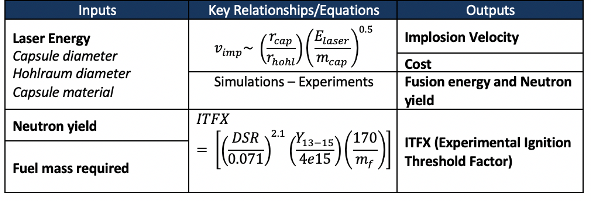 <ref>Laser Indirect Drive input to NNSA 2020 report (LLNL-TR-810573)</ref>
<ref>Laser Indirect Drive input to NNSA 2020 report (LLNL-TR-810573)</ref>
Over the last 50 years, development of LCNF facilities enabled increases in laser energies (delivered to D-T fuelled targets) by 5 orders of magnitude. The National Ignition Facility, NIF at LLNL contains the world's most powerful laser.
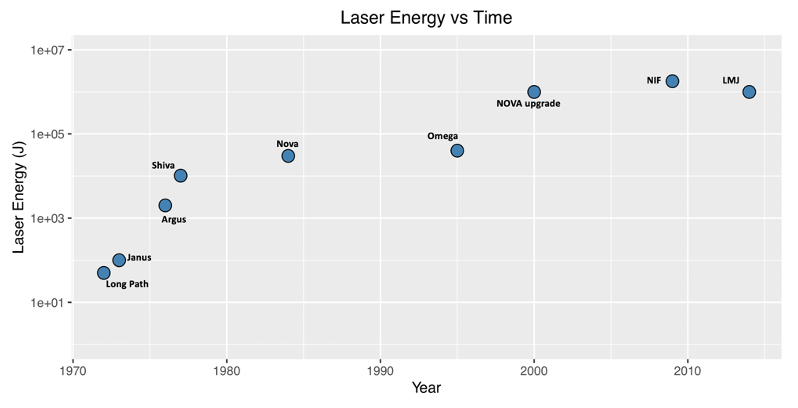 <ref>https://www.sseb.org/downloads/AM-2012/presentations/Dunne.pdf</ref>
<ref>https://www.sseb.org/downloads/AM-2012/presentations/Dunne.pdf</ref>
